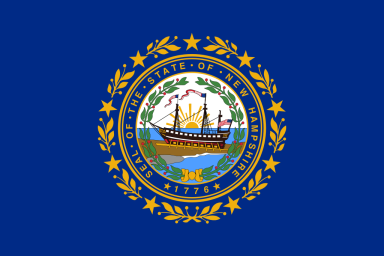What’s the Difference Between a Personal Injury Claim and a Workers’ Comp Claim?

Suffering an injury can significantly impact a person's life, resulting in physical pain, mental distress, and financial difficulties. It's critical to be aware of your options for obtaining support and compensation in these kinds of situations. Individuals who have suffered injuries have two options: pursuing a personal injury claim or filing for workers' compensation. While all of these avenues aim to help persons who have been hurt, there are substantial differences between them in terms of their reach, conditions, and possible outcomes. Workplace accidents are a common occurrence in the United States, with 4.9 million workers’ compensation claims made every year. Join us as we explore the world of workers' compensation and personal injury claims to better understand your rights and options, whether you're an injured worker seeking help or simply interested in the nuances of these legal landscapes.
Fault
The biggest difference between personal injury claims and workers’ compensation claims is the issue of who is at fault in these accidents. Workers’ compensation is a no-fault system, meaning that fault is not necessary to be proven as the employer’s insurance company will be required to pay for the employee’s medical treatment, wages, and rehabilitation needed for them to return to work. For personal injury claims, the victim must prove that the other party was at fault for causing their injury and any other pain and suffering that they believe they have suffered as a result of the incident. In a personal injury claim, you can also seek compensation for other losses such as lost wages, medical expenses, and damage to your property.
Pain and Suffering Damages
Typically, in workers’ compensation claims, victims are not awarded any type of pain and suffering damages. Since the accident happened on company property, they are automatically awarded the necessary benefits to return to work. This includes medical and any rehabilitation costs, on top of getting their wages while they are out of work. Victims who have filed personal injury claims are entitled to seek damages for pain and suffering, as these cases take into account the physical and emotional impact these accidents can have on a person. This can include physical pain, psychological trauma, loss of enjoyment, and other long-term effects that the injury may have on the victim.
Who You Can Sue
In personal injury claims, the person injured in an accident can sue an individual or entity they believe to be responsible for the accident and the injuries. This can include businesses, government entities, or other organizations, as well as individual people. For example, people who have suffered injuries due to a car crash can sue the other party for damages, but they must prove that the other party was at fault. In slip and fall accidents, an individual can sue the business or owner of the property for damages if they can prove that the other party was at fault due to their negligence.
For workers’ compensation claims, employees cannot sue their employer or coworkers for negligence or fault if they are injured on the job. Since workers’ comp is a no-fault system, the fault is not considered when benefits are being provided to the injured employee.
Which Workers Can Sue Their Employers?
Generally, regardless of who was at blame for the accident or injury, workers' compensation laws are in place to ensure that injured employees receive medical treatment, wage replacement, and other associated benefits. In exchange, companies are often shielded against claims of bodily injury made by workers.
This general standard does include a few exceptions, which might vary depending on the jurisdiction. Workers may be entitled to file a personal injury claim against their employers in specific situations. These exceptions might apply in situations when the employer willfully injured the employee, when the employer does not have workers' compensation insurance as required by law, or in situations where the employee's injuries were caused by a third party other than the employer.
Can You File Both Personal Injury Claims and Workers’ Comp Claims for the Same Injury?
Depending on the specifics and the regulations in your jurisdiction, it is possible to file both a personal injury claim and a workers' compensation claim for the same injury. When a work-related injury involves a party other than your employer or a coworker, this circumstance could take place. Here’s an example of how this could potentially happen:
Your job requires you to drive a corporate vehicle, and while doing so, you get into a car wreck that was brought on by the negligence of a different driver who is not a coworker. You might be eligible to file a personal injury claim as well as a workers' compensation claim in this situation.
You could request benefits from your employer's workers' compensation insurance through the workers' compensation claim, including medical care, wage replacement, and other associated benefits. Typically, this claim is submitted through the workers' compensation system in accordance with the guidelines and specifications established by your jurisdiction.
In addition, you could bring a personal injury lawsuit against the negligent driver who started the collision. You are allowed to pursue financial compensation through a personal injury claim for losses, including medical costs, discomfort, missed wages, and other pertinent losses. To file a claim, you need to go to civil court and prove that the other driver's negligence caused the injuries you sustained.
Due to rules and regulations in certain jurisdictions, you may not be able to seek damages for your personal injury claim and workers’ compensation claim simultaneously. If you are involved in an accident like this, consult with a legal professional with experience in personal injury and workers’ comp claims before pursuing action.
Legal Resources for Injured Employees
In this section, you’ll find some great legal resources to help you with your next steps after a workplace accident. If you have been the victim of a workplace accident or employer negligence, the resources in this section can provide you with legal guidance, counseling, and other ways to help you through this challenging time.
Workers’ Injury Law & Advocacy Group
The nationwide nonprofit membership organization known as Workers' Injury Law & Advocacy Group® was founded to defend the rights of millions of employees and their families who endure the effects of workplace accidents and illnesses every year. The group's primary goals are to aid lawyers and nonprofit organizations in pushing for the rights of injured employees through information gathering, education, and communication. A small group of claimants' attorneys formed the organization in 1995, and it has now expanded to include over 1,100 members from all 50 states. Their membership includes paralegals, solo practitioners, and lawyers from large law firms. Every day, WILG® strives to ensure that they are able to adapt to the changing issues faced by injured workers. The group has become a significant voice for workers across the country.
Workplace Fairness
NERI, the National Employee Rights Institute, which later became Workplace Fairness, was established in 1994. To better represent their efforts to connect the expertise and work of employment rights attorneys with that of non-legal organizations and other people who are concerned with issues of justice in the workplace, the organization's name was changed in 2001. In order to more effectively raise community awareness of workplace challenges and encourage progressive changes in employment legislation, policies, and practices, experts and people concerned with workplace fairness issues should collaborate. This organization focuses on its ability to educate employers, workers, and legal services to promote the fair treatment of workers through public policy.
OSHA
The Occupational Safety and Health Administration (OSHA) was created in 1970 to ensure that all workers had safe and healthful working conditions by setting and enforcing standards for all employers and providing them with thorough training opportunities, outreach, assistance, and education. OSHA provides help and resources for both employers and employees who are in need of assistance after an accident. Their resources cover a wide range of topics that deal with workplace incidents and offer education, training, and claim submissions for employees who have suffered an injury as a result of a workplace incident. To learn more about the services they offer employees, visit their website here.
Expertise.com StaffAuthor
Step into the world of Expertise.com, your go-to hub for credible insights. We don't take accuracy lightly around here. Our squad of expert reviewers, each a maestro in their field, has given the green light to every single article you'll find. From rigorous fact-checking to meticulous evaluations of service providers, we've got it all covered. So feel free to dive in and explore. The information you'll uncover has been stamped with the seal of approval by our top-notch experts.




